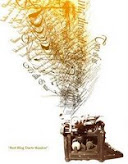Positive and negative space are both needed to create a complete picture. Without background (negative space), the subject (positive space) of a work of art might become meaningless or you might be unable to locate it at all.
For example, Imagine a yellow rectangle with a purple circle in the center. The circle, in purple, is the positive space and the background, in yellow, is the negative space. The contrast of the yellow background allows you to see the circle.
Without the negative space you wouldn’t be able to locate the positive space. The whole image would just be purple and meaningless.
Of course, this could go the other way, too. If the circle and the rectangle were the same shade of yellow, it would be an image without any positive space. The whole image would be the yellow background. Again, this is meaningless.
Look at any painting. Every artist uses positive and negative space but M.C. Escher is a particularly good example of an artist using negative space to his advantage. Due to copywrite issues, I cannot reproduce any images here, but I will direct you to the official M.C. Escher website. When you get there, click on Picture Gallery, then Switzerland and Belgium, then the image Sky and Water. Look at the way positive and negative space define each other in the form of fish and birds.
Tomorrow I’ll post something more on Escher, without images of course.
Return to main page.
Monday, January 14, 2008
Subscribe to:
Post Comments (Atom)






2 comments:
This "Sky and Water" , especially in its middle part, also reminds me of some test pictures where different people may see different images, all of them or only part of them.
Absolutely. There are a lot of examples of what you're talking about but for anyone who doesn't know, here's a website where you can view Rubin's Vase. Consider the positive space and then the negative space. You'll see two different images.
http://www.rci.rutgers.edu/~cfs/305_html/Gestalt/Vase.html
Post a Comment